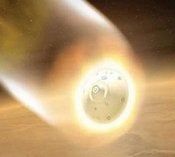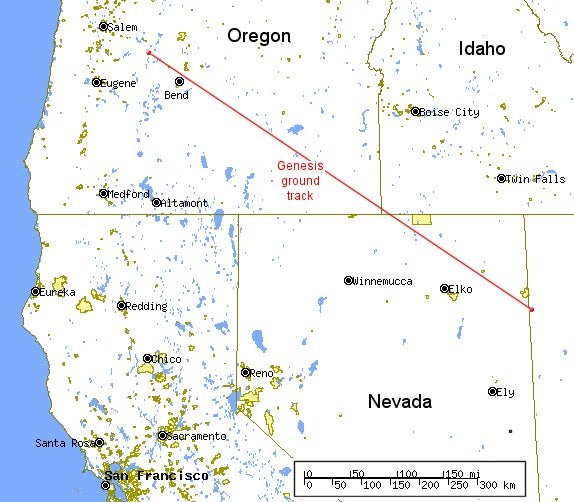On the morning of Wednesday, September 8, many residents in the western United States may witness a bright flash in the sky. Observers may mistake this for a meteor, but it will actually be a capsule ejected from NASA’s Genesis spacecraft.
At 8:52 A.M. (PDT), a “meteor,” shining brighter than the planet Venus, will appear northwest of Bend, Oregon. Traveling about 25,000 miles per hour (40,234 kilometers per hour), the fireball will streak over eastern Oregon, brightening as it descends into denser parts of Earth’s atmosphere. About half a minute later, the capsule will cross the southwestern corner of Idaho and then into northern Nevada. Finally, at 8:54 A.M. (PDT), slowed by the capsule’s drogue parachute, the flash will fade over Utah.
Observers as far away as 100 miles (160 km) from the reentry path might see the capsule glowing much brighter than Venus. Meteor expert Peter Jenniskens of NASA’s Ames Research Center expects the fireball to be most luminous (magnitude –9) when it is over Nevada.
Jenniskens will be viewing the reentry, but from a different vantage point. With 20 other scientists, he will watch from the air aboard an Air Force NKC-135 aircraft, equipped with telescopes and spectrometers pointing out upward-looking windows. This veteran aircraft has also flown to study Leonid meteor showers. The group hopes to study the hot shock wave from the front of the capsule.











